@peter-dooling
active 3 years ago-
Edwin Cedeno and
 David Farkas are now friends 11 years, 1 month ago
David Farkas are now friends 11 years, 1 month ago -
Edwin Cedeno and
WPalank are now friends 11 years, 1 month ago
-
Edwin Cedeno and
 Michael Sullivan are now friends 11 years, 1 month ago
Michael Sullivan are now friends 11 years, 1 month ago -
David Farkas replied to the topic Leica 120 mm CS: AF not working in the forum S Lenses 11 years, 1 month ago
David,
Glad to hear that the lens is back to 100%, and back in your hands.
-
david-farkas likes a reply on Leica 120 mm CS: AF not working 11 years, 1 month ago
-
Edwin Cedeno and
 dalethorn are now friends 11 years, 1 month ago
dalethorn are now friends 11 years, 1 month ago -
Edwin Cedeno and
 Peter Dooling are now friends 11 years, 1 month ago
Peter Dooling are now friends 11 years, 1 month ago -
Edwin Cedeno changed their profile picture 11 years, 1 month ago
-
Edwin Cedeno became a registered member 11 years, 1 month ago
-
David Farkas posted an update 11 years, 1 month ago
Here's a quick test show I took today. 100mm Summicron-S wide open at minimum focus distance, shot on S (Typ 006) @ ISO 800, 1/90th sec @ f/2. Not too shabby. 🙂 -
David Farkas wrote a new post, Photokina 2014: Day 4 – Leica compacts get upgraded with D-Lux (Typ 109) and V-Lux (Typ 114) 11 years, 1 month ago
There has been a lot of excitement at the show around Leica’s two new compact cameras, the Leica D-Lux (Typ 109) and the Leica V-Lux (Typ 114). Admittedly, there is tons of excitement around pretty much all of Leica’s 20-something new products presented here at Photokina, but for these two cameras we are seeing perhaps the largest upgrade from their predecessors. Both cameras have gotten major heart transplants, sporting sensors much larger than we usually see in cameras of this size.
I’ve used almost every generation of D-Lux and V-Lux and they have always been very capable cameras, offering great features, easy operation, lasting value and, above all else, great image quality. The new D-Lux and V-Lux cameras have raised the bar way, way higher with regards to absolute image quality, ease of operation and feature set.
I spoke with the product manager for these compact cameras, Peter Kruschewski, to gain a little more insight and take a closer look at these new models.
D-Lux (Typ 109)
The new D-Lux has a heft that belies its size. Pick it up and immediately you know this isn’t a plastic fantastic point and shoot. Rather than the half plastic/half metal build of the D-Lux 6, the new Typ 109 features an all-aluminum construction that is as durable as it is sleek. Even with its small form factor, the camera conforms nicely in the hand and has a little rubber thumb pad for extra grip. Multi-selector mode dials and the like are now replaced with direct exposure controls like shutter speed and exposure compensation dials on the top plate, with aperture and focus rings on the lens. The dials have solid detents and the focus ring is smoothly damped, giving a nice analog-type feel. Peter explained that the M-like control layout was a direct effort to make this generation of D-Lux (the 7th!) the truest to Leica DNA yet. And, I think on this front, Leica has succeeded. Straightforward controls have always been a hallmark of Leica.
The 12.8 MP micro 4/3 sensor in the D-Lux is 5x larger than the 1/1.7” sensor used in the D-Lux 6. To put this in perspective, Leica’s top of the line S System has a sensor that is 60% larger than full frame 35mm. The quality differences between the S and even the excellent M 240 (a full frame model) are readily apparent. The D-Lux’s chip is now 500% percent bigger. This is a really big deal.
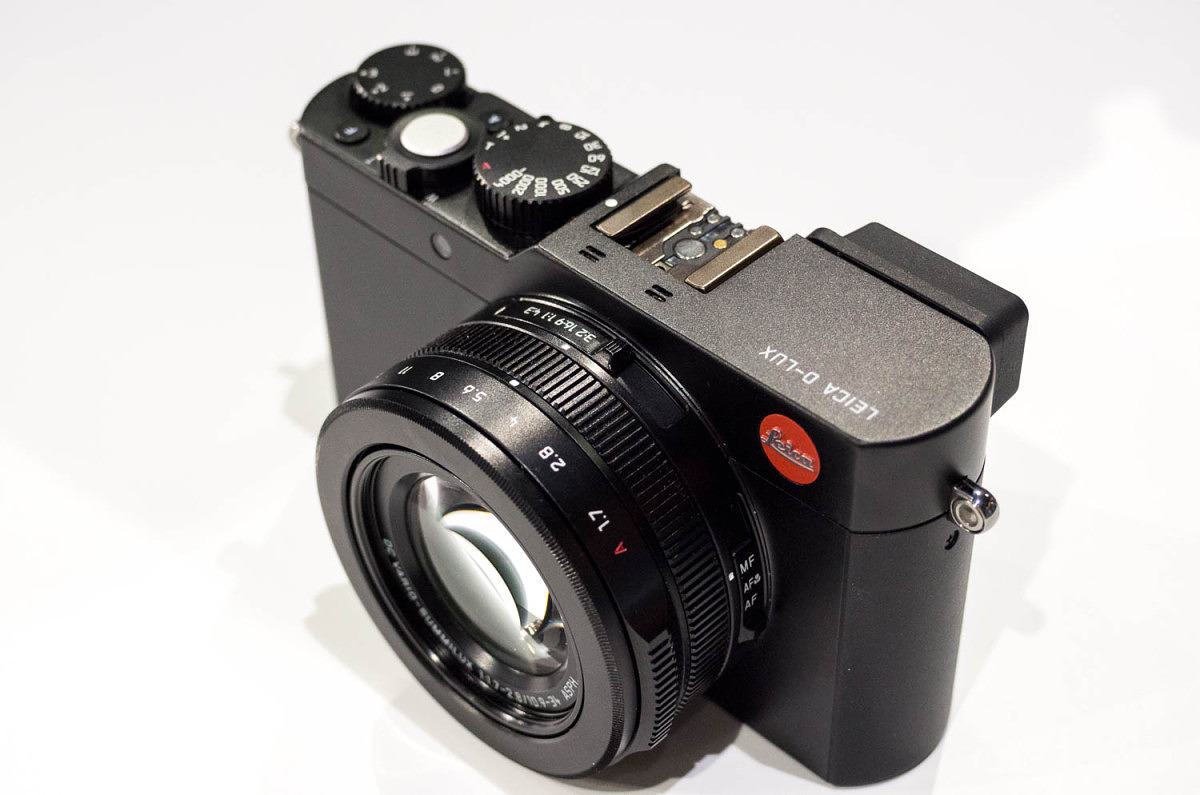
The two main advantages that a larger sensor will bring is improved low light performance and more creative freedom by allowing more depth of field control. Pictures will look more three dimensional with foreground subjects popping off the background. And, rather than struggling to take a clear picture at ISO 800 like on most compact cameras, I’m told this new model will excel at ISO 6400. Of course, if you want to see how far you can take low-light shooting, there are settings all the way up to 25,600.
Along with a larger sensor, you usually need a bigger lens. Somehow, the optical engineers at Leica have managed to keep the size of the lens down while still offering a great focal length range of 24-75mm (equiv) and very generous maximum aperture of f/1.7 – 2.8. According to Peter, yes, some sacrifices had to be made in lens design, such as limiting the long end of the range to 75mm vs. 90mm and going to f/1.7 rather than f/1.4. The goal was to keep the quality level and specs as high as possible, while keeping the size to a minimum. And, even though the DC Vario Summilux lens is larger on the Typ 109, it matches up quite nicely with the slightly beefier body. For those using filters, the D-Lux now accepts an E43 filter size, the same as used with the X Vario and the new X Typ 113.
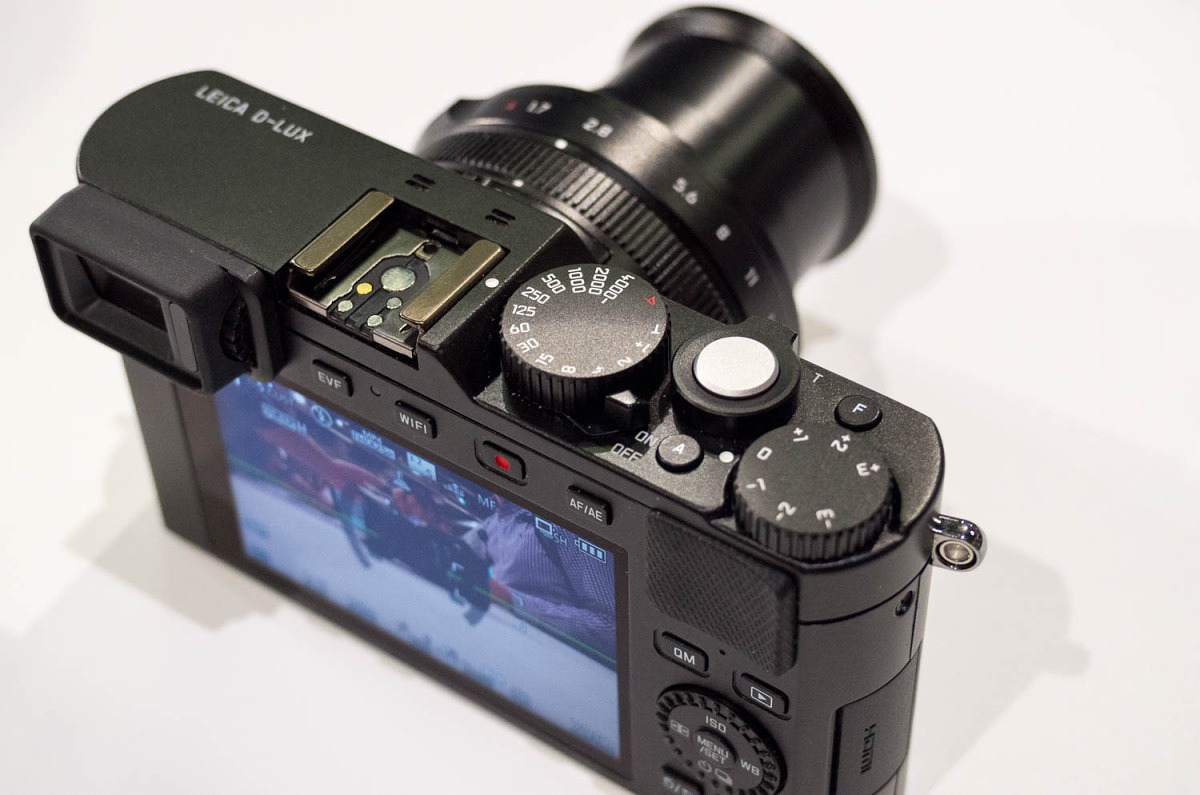
Also making its way to a D-Lux camera for the first time is a built-in, high resolution 2.8MP EVF. The EVF activates automatically when you place it up to your eye. A built-in finder has been requested by customers for some time, and now, Leica has found a way to incorporate it. Peter thinks that the built-in EVF is a defining feature of the Typ 109, and was extremely pleased that they were able to physically fit in to the camera, especially considering its compact size and other component requirements. Looking through the EVF is a real treat. Clear and bright with a fast refresh, this viewfinder is top rate with class-leading resolution and clarity.
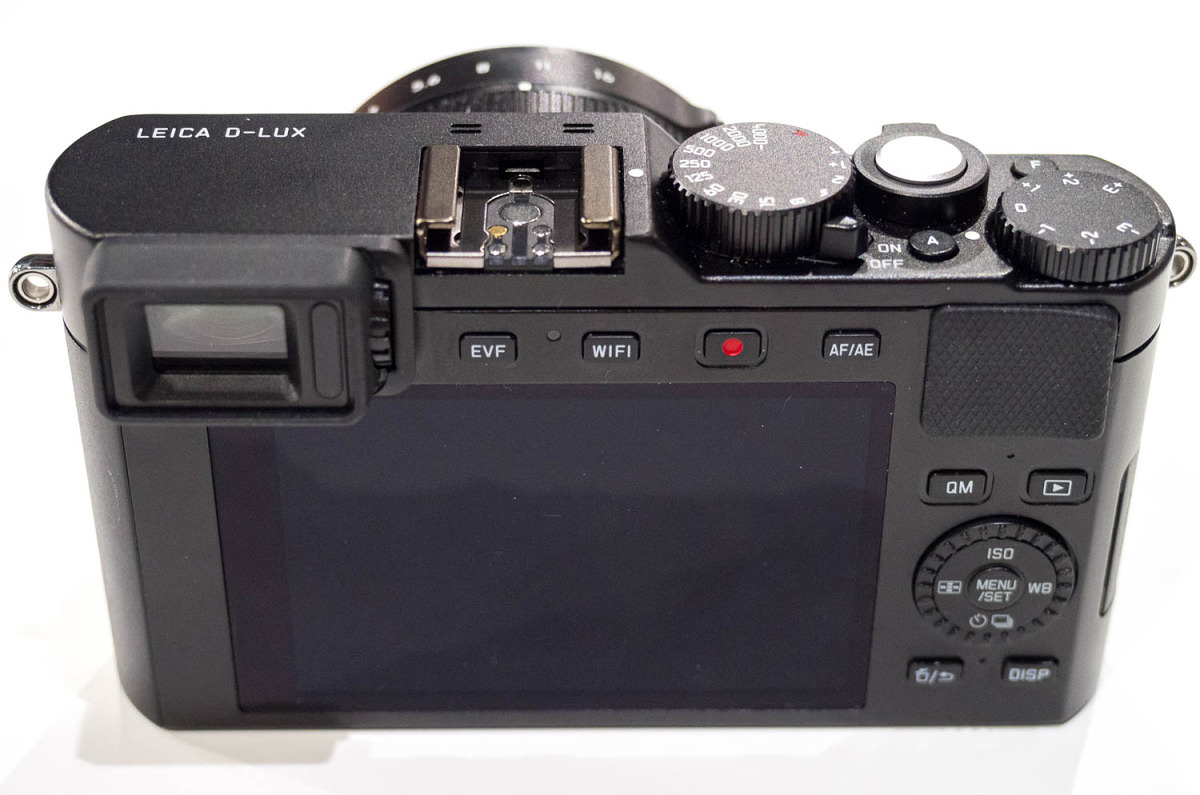
Of course, not everything was able to be fit in the new body. Perhaps because there was just no more space inside the packed chassis, or maybe to make the camera more system-like, there is no built-in pop-up flash. Instead, a small CF D hot-shoe mounted flash is provided with the camera. It’s cute and reminds me a little bit of the old single-use cube flashes, but it’s not made of clear plastic nor is it single use. You needn’t worry about batteries; the flash is powered by the camera. The other reasoning for omitting a built-in flash is that with such great low light performance and a fast f/1.7 lens, there are very few situations that you might actually need a small flash.
For video enthusiasts, there’s a lot to love. The D-Lux brings 4K video to the table with high-quality encoding up to 100 Mb/s. The 4K video area is slightly cropped from the full frame as it is 1:1 pixels for maximum quality with no down sampling. The active area isn’t too much smaller, so the resulting lens factor is about 1.5x, meaning that your 24mm wide angle turns to roughly a 35mm and 75mm at the long end goes to about 100mm. All-in-all, not a bad trade-off if 4K is your thing.
For remote camera control, instant review and image sharing, you can connect to your phone or tablet with WiFi. A new feature is that by using a phone with NFC (Near Field Communications), the camera and the phone will take care of setting up the correct WiFi settings for you. Very cool feature.
Rounding out some of the new features is focus peaking, visible on screen or in the EVF and a new high speed shutter setting, which takes the fastest shutter speed from 1/4000 sec on the D-Lux 6 to a crazy fast 1/16,000 sec by way of a new high-speed electronic shutter. And while you may not be able to freeze the flight of a bullet through an apple, you won’t need an ND filter to shoot wide-open at f/1.7, even on the sunniest of days.
One last note, for those upgrading to the new D-Lux, please note that the battery is not the same. Due to the increased power needs of the larger sensor, a new high-capacity battery, the BP-DC15-U is now required.
V-Lux (Typ 114)
The V-Lux has seen some pretty sizeable upgrading as well. The sensor has also gotten a sizeable boost both in terms of physical size and resolution, now sporting a 1” 20 MP CMOS chip. While not quite as large as the micro 4/3 sensor in the new D-Lux, the V-Lux’s 1” chip is 5x larger than that used in the V-Lux 4 and should see the same relative performance improvements found in the D-Lux, like better subject separation and improved low-light capabilities.
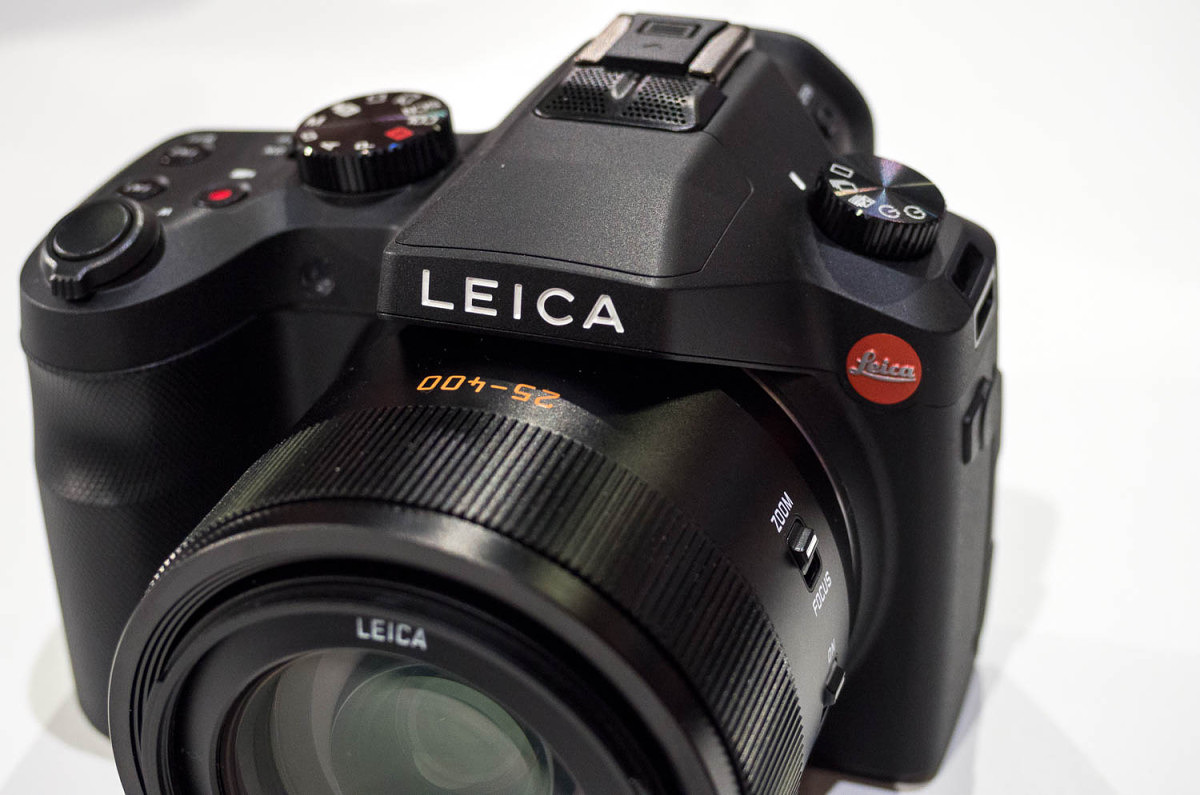
Peter called the new Typ 114 the “Swiss Army Knife of digital cameras.” He doesn’t seem too far off the mark here. In spite of the huge increase in sensor size, the V-Lux still boasts a 25-400mm f/2.8-4 zoom with image stabilization and incredibly fast autofocus. And I mean really fast. It used to be accepted that for sports you really needed a DSLR with a long zoom to capture action, and that a compact all-in-one camera fell short. Not so with the V-Lux. The AF is smoking fast, able to move that big lens from 2m to infinity in a blink of an eye (if said blink took 0.2 seconds). The camera can shoot at a blazingly quick 12 fps and, just like the D-Lux, now has shutter speeds up to 1/16,000 sec.
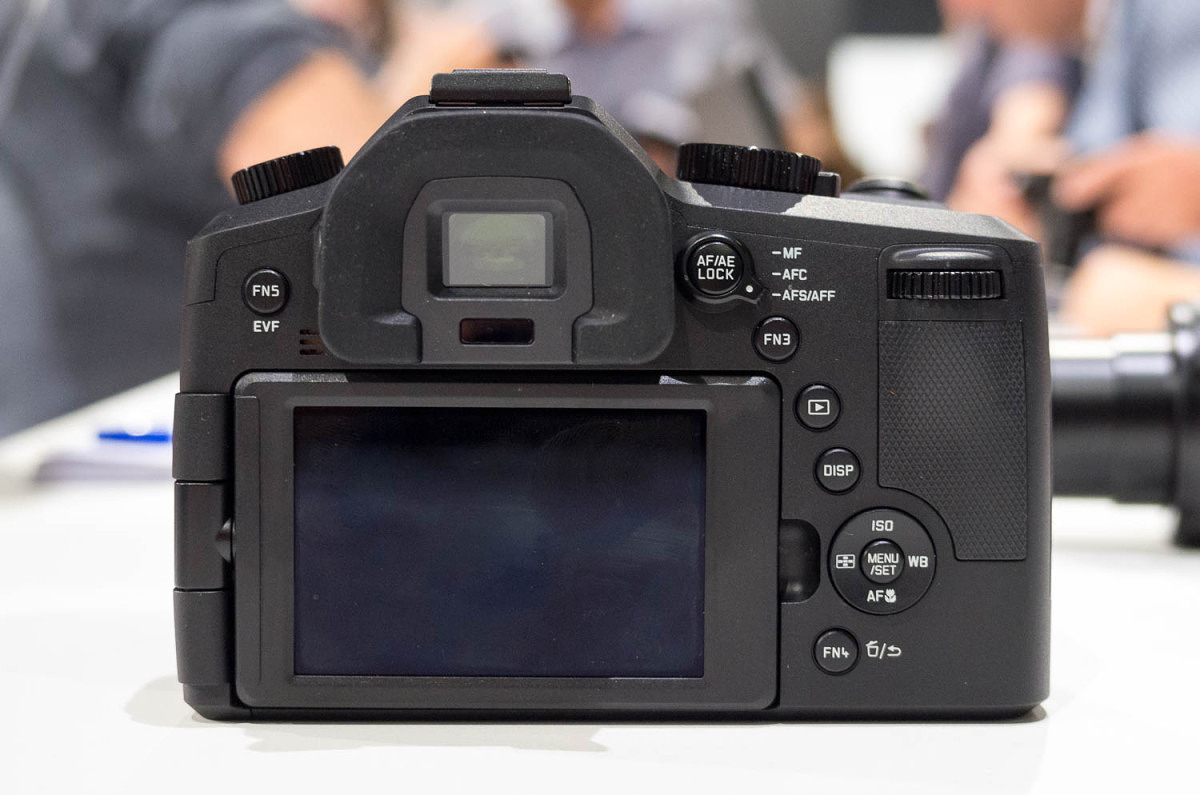
And, with 4K video on board, you can shoot even faster if you need to. Because each frame of 4K video weighs in at 8MP, and because you can capture 30 frames of this resolution every second, a new technique for action is to pull still frames from high resolution video. On FullHD, each frame is only 2MP, hardly enough for anything but online use. But, with 8MP, even prints like 16×20” can be expected. And, because the capture size is smaller than the full sensor, you can get an effective 600mm focal length for these action sequences. Of course, this technique isn’t without trade-offs. You’ll be giving up RAW which will limit your post-processing options and you won’t get the full 20MP image. But, if you really want to catch a cheetah bounding across the plain while on safari, it’s worth at least trying.
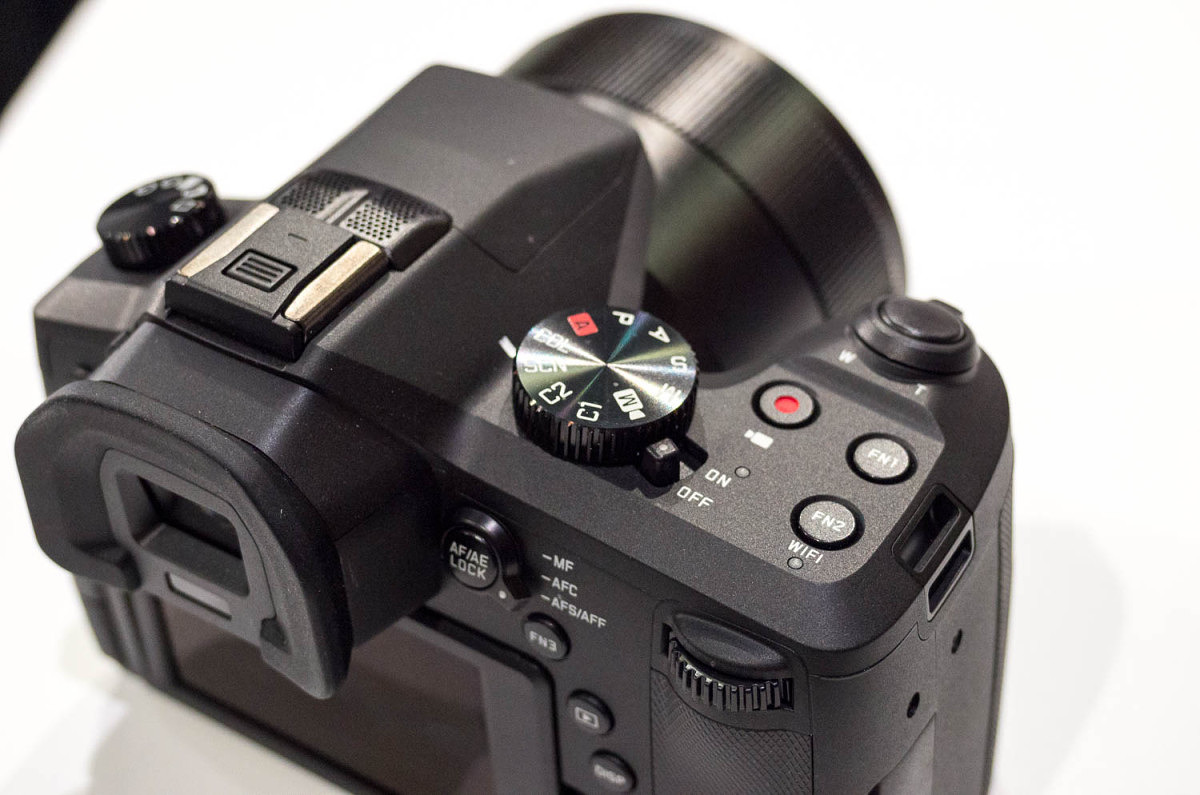
With the bigger sensor, low-light performance should be improved and as such, the ISO range has been expanded from a 3200 max up to 12,800. My guess is that optimum maximum ISO will be somewhere in the 1600 – 3200 range.
While the V-Lux 4 featured a built-in EVF and a rear LCD, both have gotten nice upgrades. The EVF is now a 2.4MP OLED type and the screen gets a full 920K pixel resolution, same as the D-Lux. Both are crystal clear with smooth and fluid live view. And, just like the D-Lux, focus peaking is an option for manual focus assistance.
And, just like its D-Lux brethren, similar WiFi and NFC can be found here too. All you need is the free Leica app on your iPhone or iPad and you’re off to the races.
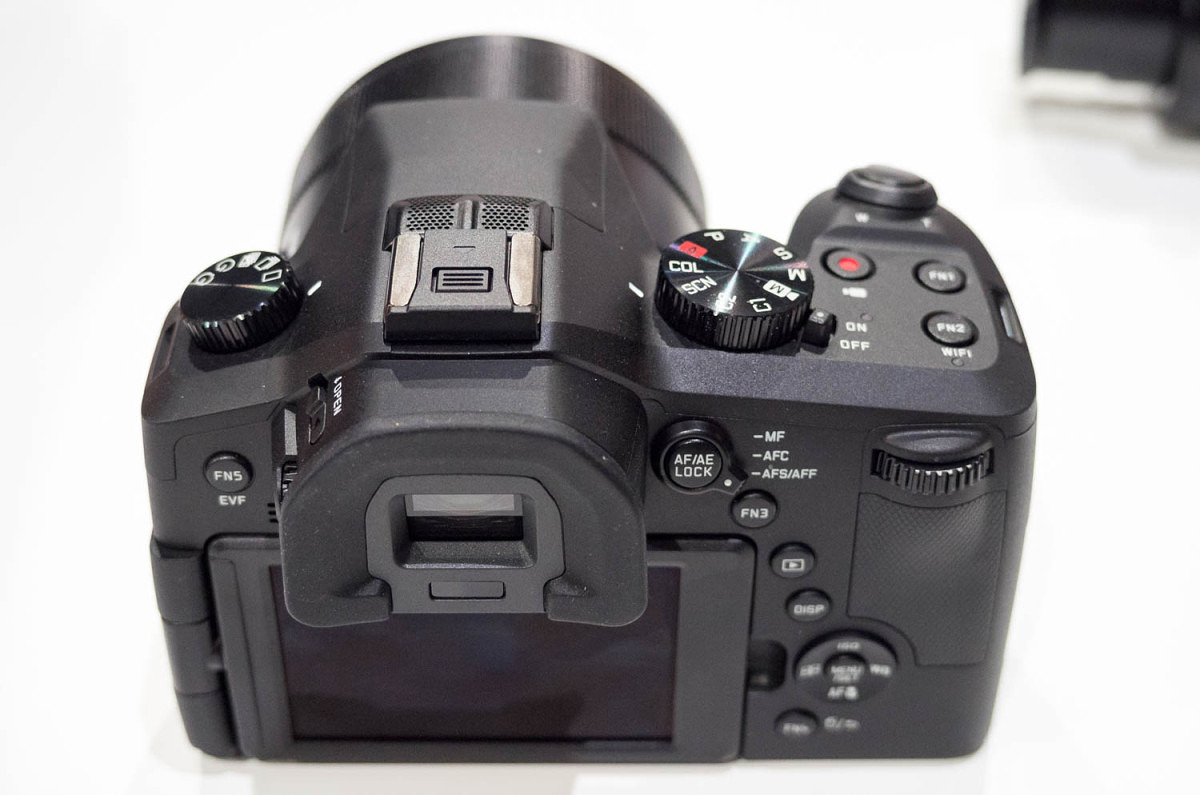
Besides just the internal modifications, the new Typ 114 has had more notable changes from V-Lux 4. It is larger but not much heavier. The increased size is need to accommodate the larger sensor and correspondingly larger lens, which now has a front diameter of 55mm. A nice benefit of the thicker lens barrel is the addition of a nice, wide zoom/focus combination ring. There’s a small switch on the side of the lens that allows you to toggle the function easily. The only other switch on the lens is one to control image stabilization. In fact, this more minimal design carries throughout the camera as there are fewer buttons and switches. The result is most certainly cleaner, more streamlined, and ultimately more modern.

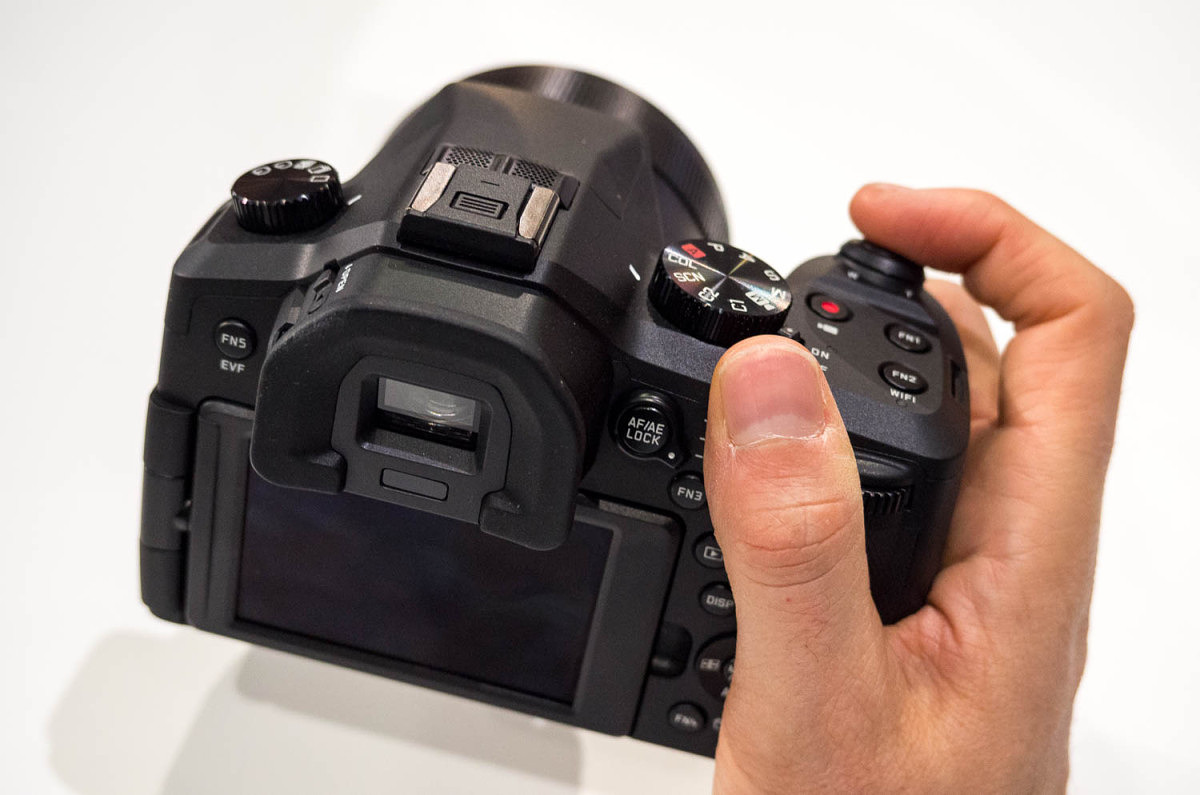
The camera feels very nice to hold. The grip is well-defined and a rubber thumb pad is added for increased ergonomics. Something else you might notice when picking up the camera for the first time is that the EVF/eyecup assembly on top of the camera protrudes from the body and overhangs the rear articulating LCD by at least a good inch. The result is far fewer nose prints on the LCD for the camera and less squished noses for users. Perhaps the most grateful demographic will be left-eyed shooters, who always seem to struggle to find a comfortable viewfinder position.
Overall, the V-Lux (Typ 114) is a very solid evolution from the V-Lux 4. Leica sees it as the perfect camera for vacations, safaris, sports, or just about anything where you need maximum zoom capability with the option of high-speed focus and shooting as well as 4K video.
Unlike the D-Lux, the new V-Lux still takes the same BP-DC12-U battery. So, at least one thing is still the same…
Wrapping up
These two new compact cameras show a direction change for Leica. The under-the-hood improvements are dramatic, much more significant than in any other generational evolution to date, and offer novices and enthusiasts alike so much more bang for their Leica buck. Big sensors, great lenses, high ISO capability, more 3D look, 4K video, WiFi and more, with solid construction and great ergonomics.
These aren’t cheap cameras, by any means, at $1,195 and $1,350 for the D-Lux and V-Lux respectively. But, they are perhaps the best value in the entire range. These models are equally well-suited to first time Leica buyers as they are to veteran M shooters looking to augment their arsenal with something a little smaller, as in the case of the D-Lux, or something with more range and speed like the V-Lux.
I think Leica has done a great job of filling in all the gaps in the product range. C, D, V, X, T, M, S. No small feat for a company that had its early struggles with digital photography not that long ago. Now, there is a system for almost every user and every need, at different price points.
The new compacts should start shipping in November 2014 and are available for immediate pre-order from Leica Store Miami.
Update (Sept 23): Just got word that the first delivery of V-Lux (Typ 114) cameras will be available starting this week! Order here.
-
Josh Lehrer replied to the topic New S (007) in the forum Leica S 11 years, 1 month ago
To be honest I'm actually pleased with Leica’s decision to stay at 37.5 megapixels. Having made many large prints with the S2 and the S (Typ 006) I've yet to find myself wanting for more resolution. I find that the only times the image sharpness is not satisfactory is when I make a mistake in my technique. As we all know the tolerances for m…[Read more]
-
Bob Levite became a registered member 11 years, 1 month ago
-
Kirsten Vignes and
 Carlos V. Causo are now friends 11 years, 1 month ago
Carlos V. Causo are now friends 11 years, 1 month ago -
David Farkas wrote a new post, Photokina 2014: Day 3 – Hands on with Leica X (Typ 113) and X-E (Typ 102) 11 years, 1 month ago
The X System has been an interesting evolutionary process. First, Leica released the X1 along with the M9 and S2 on 9/9/9. The theme of that launch was that the S2 was the smallest medium format camera, the M9 the smallest full frame camera and the X1 the smallest APS-C camera. The 12MP X1 was relatively well-received but had its own shortcomings. A year later, at Photokina 2010, Fuji showed how much they liked the X camera concept of a DSLR sensor in the body of a compact camera with classic styling by showing their own. Heck, they even called their version an X100. The X100 had an APS-C sensor, a 35mm equivalent lens just like the X1 and a two tone look, again, much like the Leica. Not much happened with the X System until the X2 was released in May 2012 at the Berlin Das Wesentliche event. The X2 upped the resolution, kept the same great lens, and addressed many of the shortcomings of its predecessor. The X2 certainly did much better in the market and has proven to be a great little camera. My wife still uses and loves her Paul Smith X2.
But many users wanted a zoom lens and a better screen, among other things. So, in July 2013, the X Vario was launched. Featuring a 28-70mm equivalent zoom and a larger 3” high-res screen with the operational elements from the new M (Typ 240), the X Vario (Typ 107) seemed like an even bigger improvement. Unfortunately, the market didn't necessarily see it this way. The camera was teased as a Mini-M leading up to the launch (and it does bear a striking resemblance to the M). Expectations ran high for a CL-type digital, a smaller optical rangefinder camera, hopefully with full frame. This is not what came and to make marketing matters worse, the zoom lens featured a variable aperture range of f/3.5-6.3. Perhaps if the lens had been just a half a stop faster at f/2.8-5.6 the launch might have turned out differently. Forget for a moment that the lens on the X Vario is probably one of the best zoom lenses Leica has ever made for any camera, and that it was taken on and designed as a personal challenge by head of optics Peter Karbe, or that the $11,000+ 30-90mm S lens has almost the same f-stop range and no one complains. The result was a slow start for the X Vario, but a loyal following for those that were willing to try one out. I carry one with me every day in my “man-purse” ONA bag. My logic is that I get a compact camera with autofocus, usable high ISO, a serviceable zoom range, incredibly good optics, just the right amount of resolution, I can shoot video and I am still getting real Leica images close to the quality of an M9. As proof of its flexibility, just a take a look at 90% of the images on my Photokina 2014 reporting here on Red Dot Forum – they are all done with the X Vario. My video interviews – also done with the X Vario. It’s a good camera, and I’ve been a fan ever since I took one on a family trip for review. I never ended up taking it out of my bag.
But now that Leica had given its users a really good X camera with a zoom, they wanted a fast prime lens, faster than the 36mm f/2.8 on the X2. And, now they have it. The X (Typ 113) is the culmination of the improved features and body of an X Vario, along with a newly designed 23mm (35mm equiv.) f/1.7 Summilux ASPH. I’m told the lens is a real stunner, and I can’t wait to try one out when I get back to Miami. I’m not sure it will replace my X Vario, but I’m open to the possibility. And lest I forget to mention that this new lens focuses down to a mere 20cm. Oh, the possibilities…
Besides the fast lens, there is one major update to the X 113 from the X Vario. The camera can use the Visoflex (Typ 020), the same 2.4MP EVF that is used on the T (Typ 701). This means that in addition to the nice move from 1.4MP to 2.4MP, the new X will also be able to embed GPS data into the photos when using the Visoflex. The camera also features some nice software updates like improved Auto ISO settings, better navigation through the on-screen GUI and enhanced audio controls for video. Except for the improved audio controls, I requested all of the changes in my initial X Vario review. Thankfully, in concert with the X 113 release, updated firmware is available to all X Vario owners to take advantage of the same feature improvements.
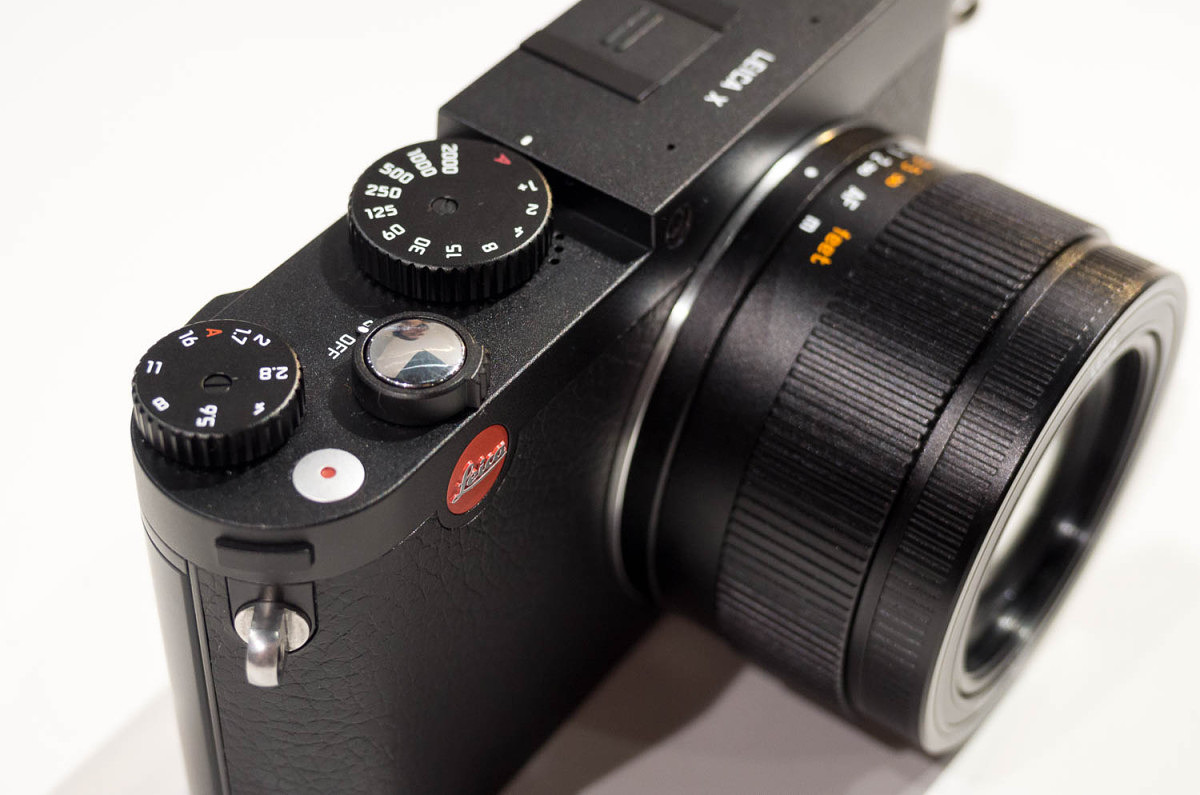
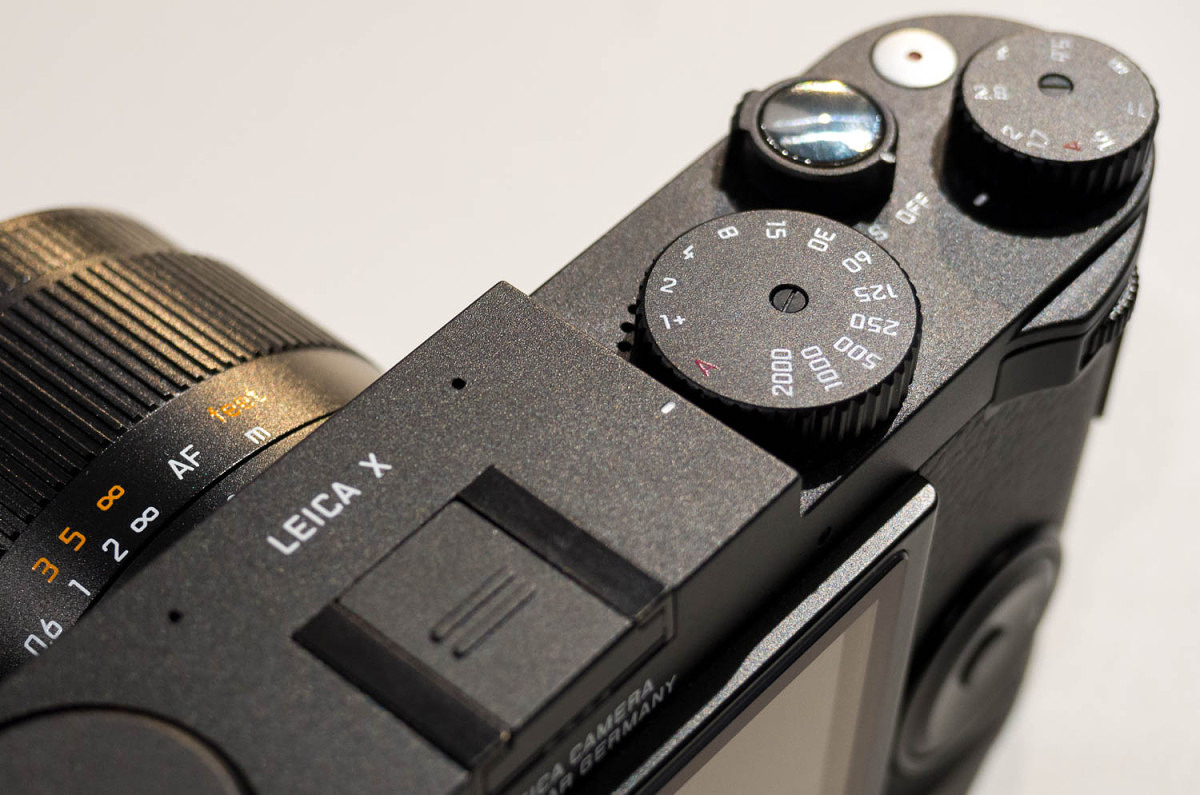
Another nice update is that, in addition to the standard black on black color motif, the X 113 now comes in a super-classy silver chrome with brown leatherette finish. It looks awesome. Leica should really be congratulated for going outside the normal range of options and creating such a stunning camera design. Like the X Vario there are manual dials on top of the camera for aperture and shutter speed and a smooth-turning, wide-ridged ring on the lens for focus with a proper focus scale. All these controls feature an A setting whereby that function can be automatically set by the camera. I love being able to shoot in full auto then easily use the lens in MF mode without ever looking at a single menu.

The X 113 camera will run just $2,295, which is a great value considering you’re getting a Leica Summilux lens and solidly-made Leica camera. As I tell people regarding the Vario, just think about it this way, you’re paying for an awesome Leica lens at a fraction of what a similar M lens might cost….and you’re getting a great camera essentially for free.
Along with the camera, there are some really sweet cases, both full every ready and half case protectors. For the silver/brown camera I’d suggest the two-tone canvas and leather one that looks like it came off the set of Mad Men. So vintage. So cool. There’s also a matching brown leather strap and two tone Visoflex pouch to keep the look going.
And while the X2 is officially going away, fans of the camera needn’t get too emotional. The X2 will start life over as the very fashionable X-E (Typ 102). Styled in titanium with contrasting silver chrome dials and a textured silver cladding, the X-E looks both sci-fi modern and runway chic at the same time. The price has been dropped to just $1,795, which is downright affordable for an APS-C Leica camera with a lens. The T camera body, which features the same basic sensor, is $1,850 without a lens.
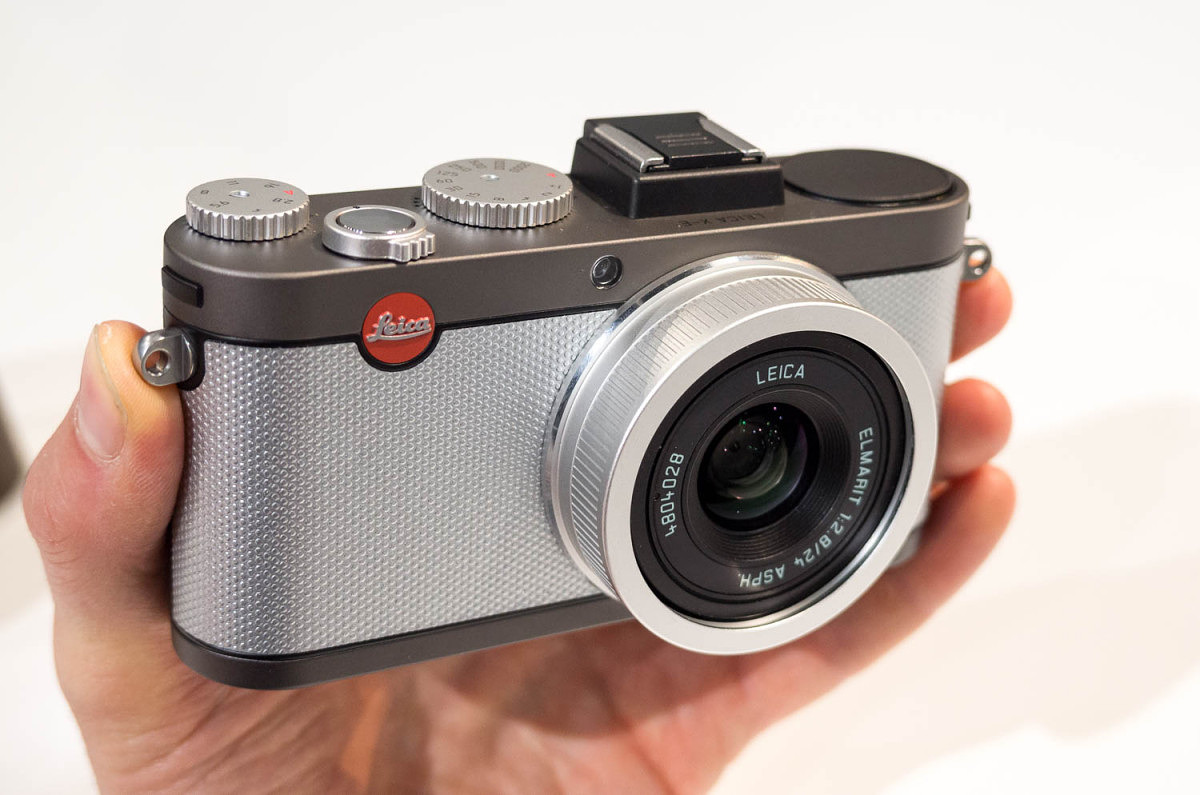
After I had a chance to play around with the new models and some of the cases, I sat down with X and T product manager Maike Harberts. You might recall our conversation not that long ago regarding the design process of the Leica T system.Let's start off easy. Please tell me about the X-E.
The X-E is basically the X2, but we used the a la carte titanium finish, contrasting silver dials and a new silver textured leatherette. I think it's a bit more space-shippy. And of course, we offer it at an attractive price point.
The X2 was very successful, so now we can offer new customers a more attractive price with a very different style.
Who do you think is the target market for the X-E?
It's not a Paul Smith or a special edition in any way, but it is for a customer who wants good quality but is not shy about showing off personal style. Anyone can have a black camera and be a “serious photographer”, but with this camera you can wear the camera and say, “hey I'm carrying a Leica.”
It can also be for the customer where the X (Typ 113) is just too big, they can look at the smaller and lighter X-E (Typ 102).
So, moving on, let's' talk about the new X.
We offer it in two color choices: black/black and silver/brown.
Why brown?
Of course, we could have put on black leatherette, but it's such a beautiful look with the brown. Brown is not too flashy and goes so nicely with the silver chrome. This is a beauty and appeals to men and women both.
What's the biggest feature of the X?
We embraced what people were looking for, a fast lens on an X camera. And ultimately, we decided to stick to the classic focal length of 35mm.
We also embraced the manual focusing. That was also a demand. With the bigger lens, we now had space to offer manual focus with a wide focus ring on the lens.
Why not a 50mm?
We reached out to quite a few customers and realized that 35 is perfect. 50 limits in terms of wide angle. So, we stayed with 35mm. And with the close-focusing abilities, you can just get closer when you need to and still get great Bokeh.
How similar is the new X to its predecessors, the X2 and the X Vario?
From a technical point of view the X Vario and the new X are almost identical. There are of course some minor changes. We had to make some small changes to accommodate for instance the new Visoflex (Typ 020).
The other thing you'll notice is that there is a consistency. A purpose. So when you pick up any X camera you immediately know how to use it. It's extremely easy to understand, whether it is the new X 113, the Vario or an X-E.
What was behind the decision to use the same 16.2 MP CMOS sensor in the new X?
We have such good experience with this sensor. It's a great sensor. It gives us the right resolution and we are very familiar working with it. I would need to see something with much better performance, then we could look at switching for future products. But for now, we really love this sensor.
Does the new X have an AA filter?
Yes, we use an AA filter on the X cameras, but no AA filter on the T. The T is a system camera, so there is a difference there. But, the AA filter is quite weak on the X line.
I noticed a strange phenomenon when shooting with the X. Why does the lens not shoot at f/1.7 close up? At close distance it only allows shooting at f/2.8.
One goal at Leica is that we have a consistent high-quality for all focal lengths and over all focus distances. So with the new 23 Summilux, a lens tends to go down in image quality in the close focus range. We could have made the lens much larger and heavier to maintain the performance without varying the aperture. The second option is that we could have limited the close focus distance to 50 or 60cm. Or, the final option is that we allow much closer focusing distance to offer greater options for photography but stop the lens down a bit in order to maintain the highest image performance. Of course, with such a close focus distance, you can still achieve very shallow DOF. So, I think it's not a bad compromise. We didn't want to limit the close focus distance, but I agree with the optics designers that we, as Leica, need to maintain the best image. This is always our first priority.
Thanks a lot Maike. Congratulations on the new products.
You're welcome, David. We hope the customers enjoy the cameras as much as we do.
Keep following my updates from Photokina 2014. There's still more to come! And feel free to post any questions you have for me here or in the forum.
-
kirsten-vignes likes a reply on Night Street From Above 11 years, 1 month ago
-
Kirsten Vignes started the topic First Shots with the New Leica X (Typ 113) in the forum X System 11 years, 1 month ago
Had the chance to shoot with the new X (Typ 113). With a wider aperture and a closer minimum focusing distance, you're able to get up closer to you subject and get more bokeh than you could with the X2.

1/125 sec, f/5.6, ISO 200
1/1600 sec, f/2.8, ISO 100
1/125 sec, f/5.6, ISO 800
1/640 sec, f/2.8, ISO 100
1/400 sec, f/2.2, ISO…[Read more] -
David Farkas replied to the topic New S (007) in the forum Leica S 11 years, 1 month ago
I just posted an extremely in-depth write-up on the S (Typ 007). Give it a look:
Photokina 2014: Day 2 – Everything you need to know about the Leica S (Typ 007)
-
David Farkas wrote a new post, Photokina 2014: Video interview with Stefan Daniel, Leica Director of Product Management 11 years, 1 month ago
Stefan Daniel, Leica's Director of Product Management walked me through most of the major products introduced at Photokina. Of course, with so many new cameras and lenses, we couldn't go into too much detail on […]
-
David Farkas replied to the topic How is everyone liking the new site design? in the forum Annoucements and Site Matters 11 years, 1 month ago
Doug, if you click on the time/date in the Last Post column, you will be taken directly to the latest reply.
As far as old attachments that were migrated over, yes, some the sizing got a little strange. But, moving forward all smaller res preview images will all be the same size.
- Load More



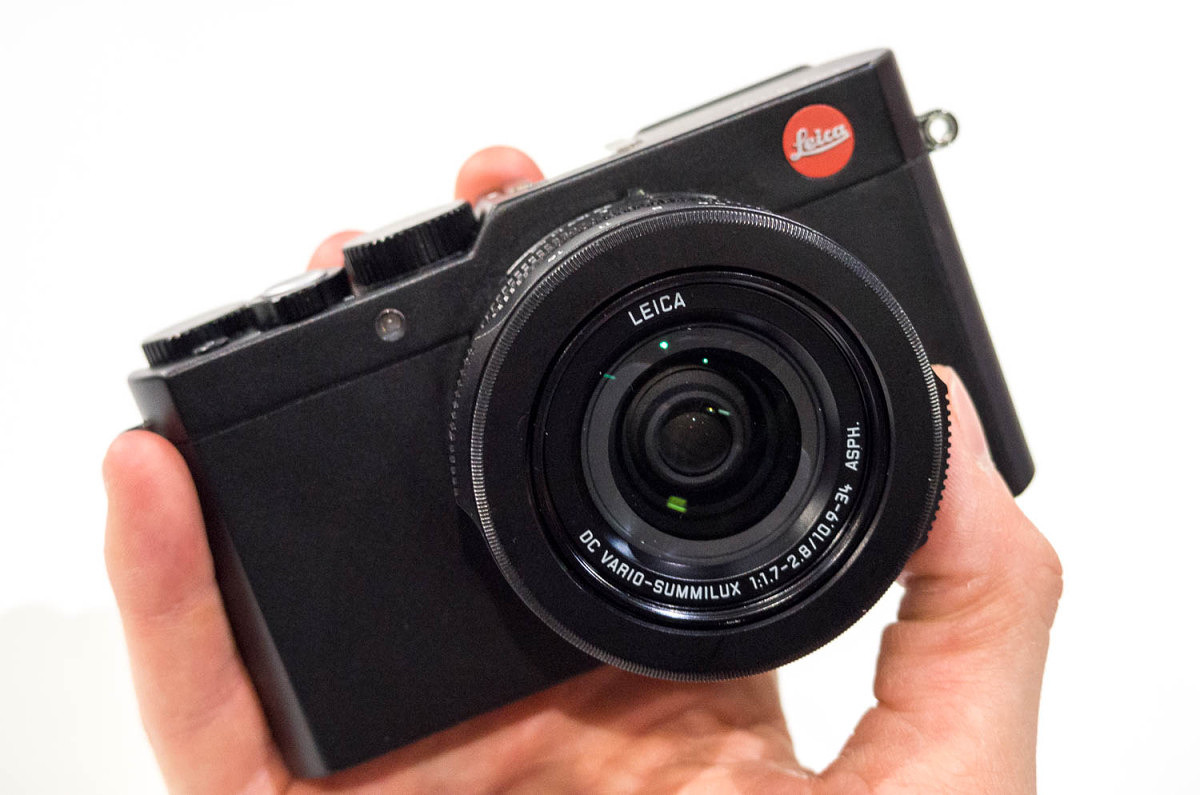
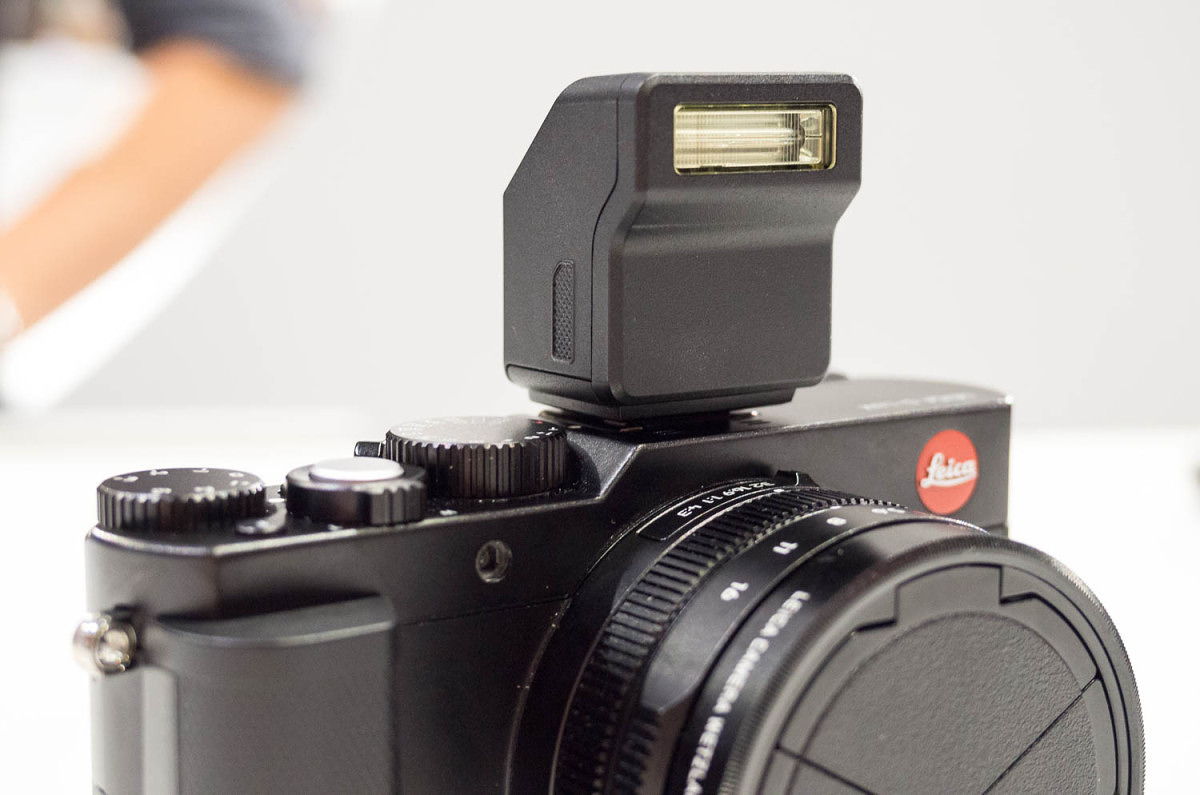
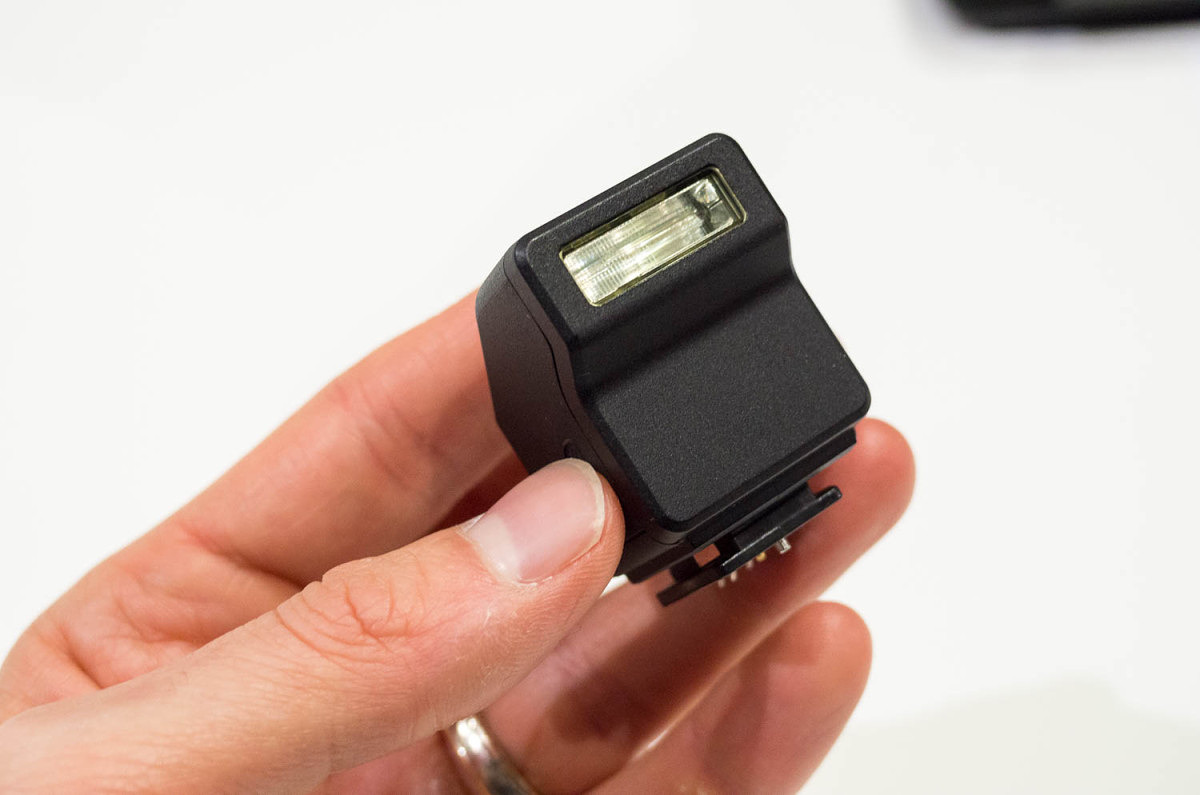
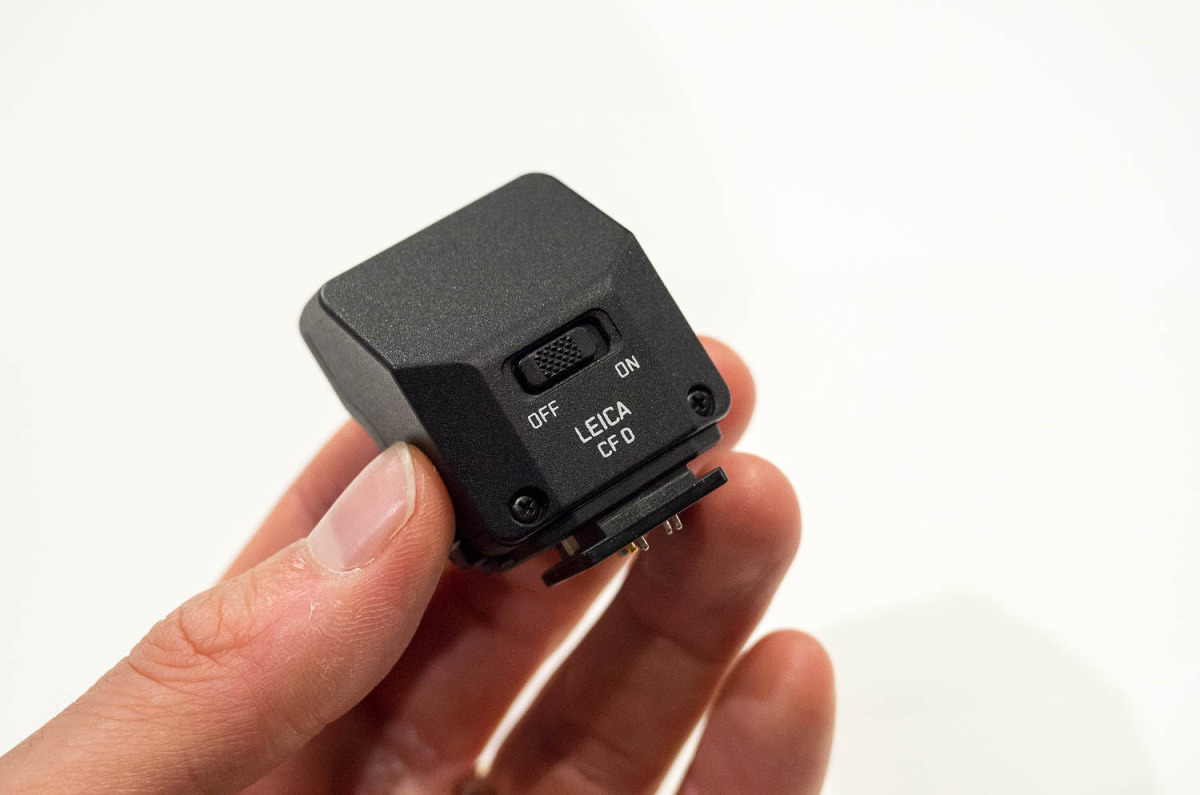
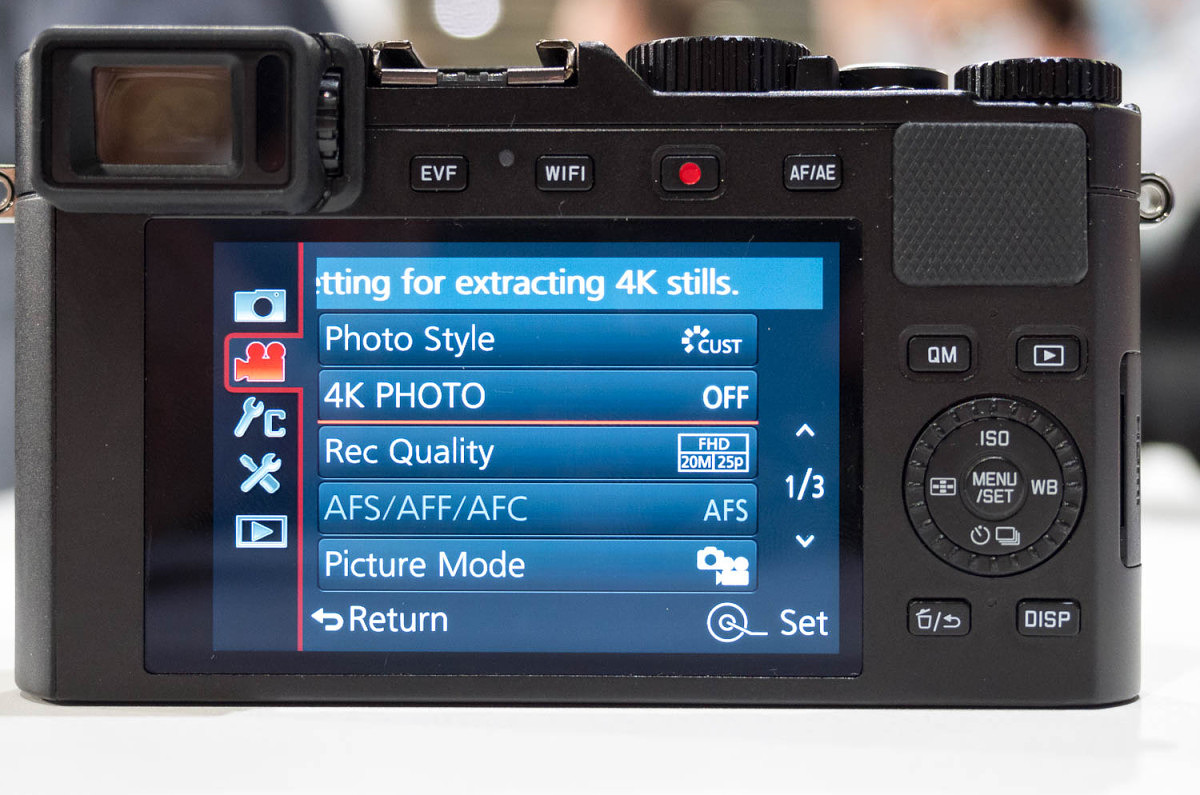

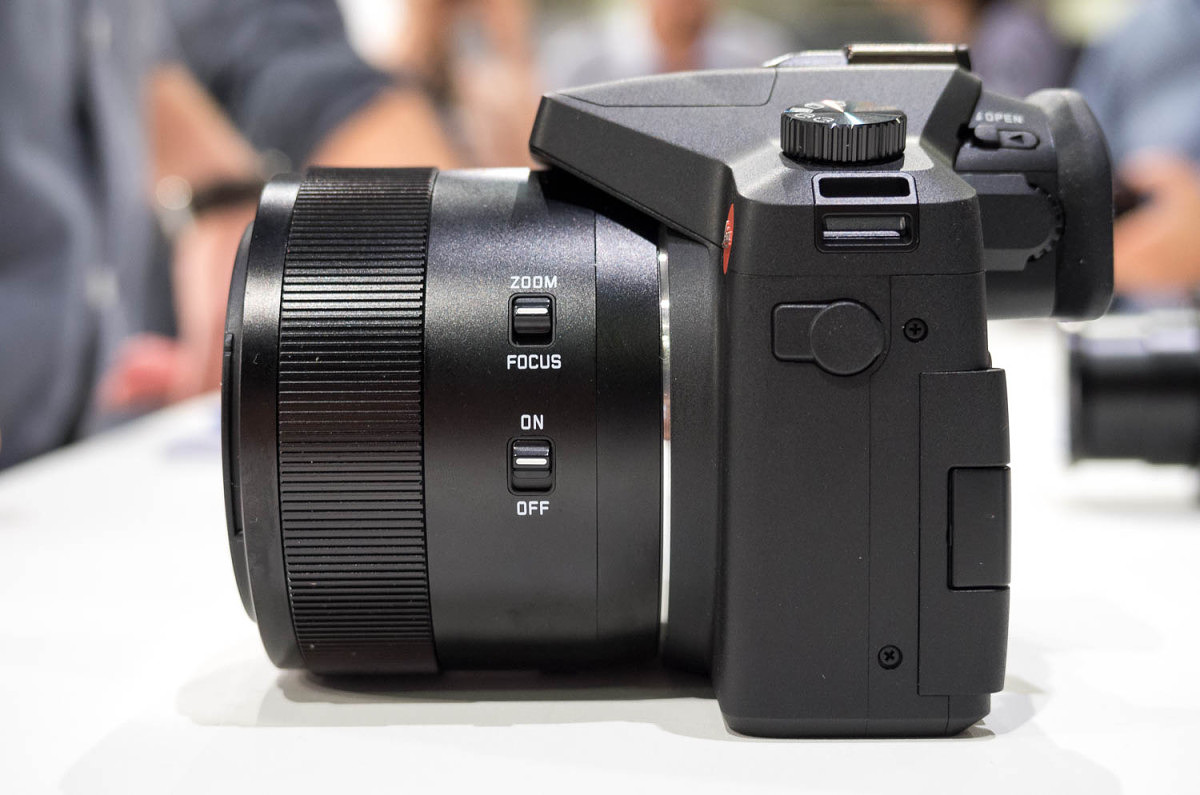
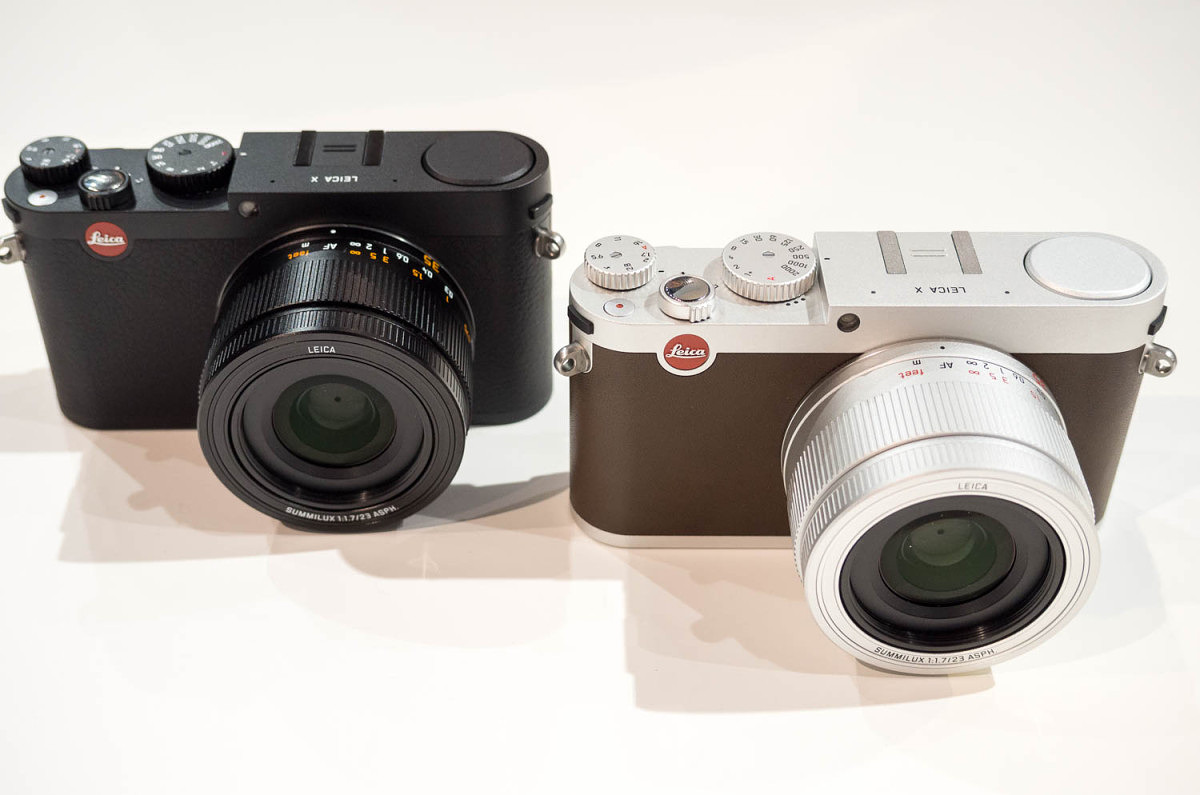
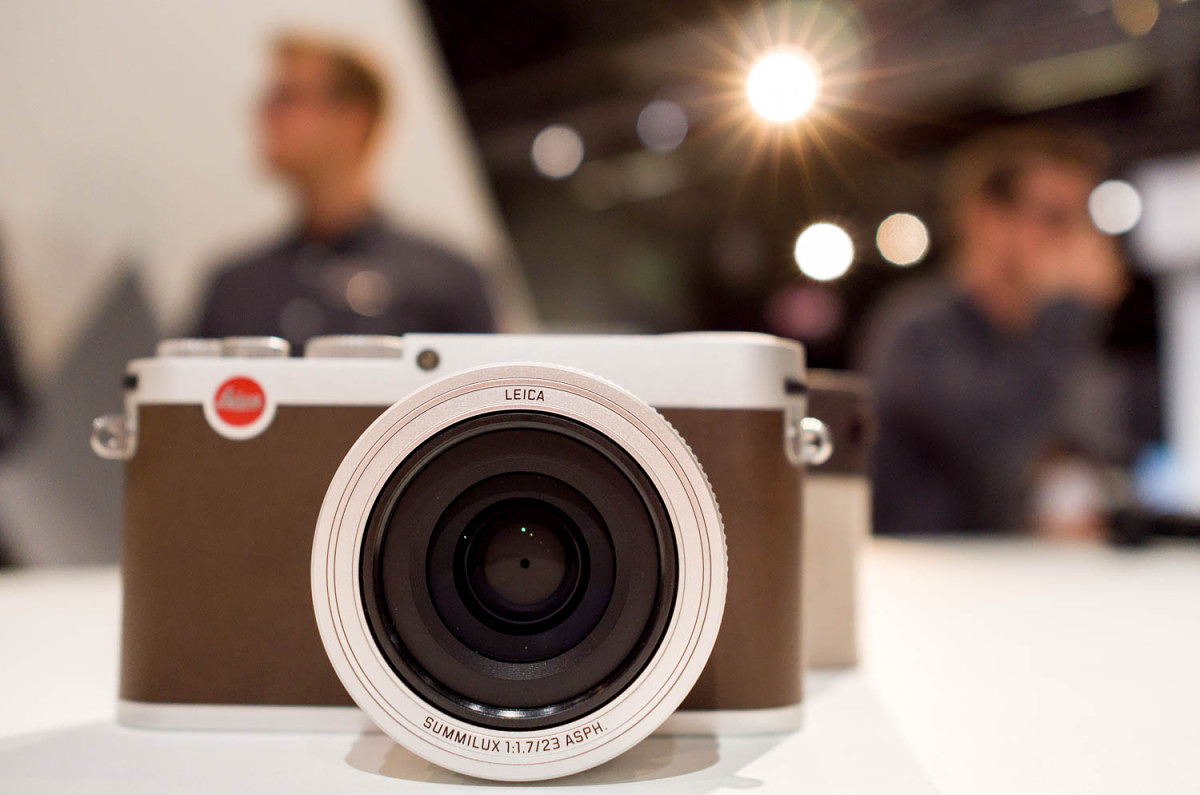
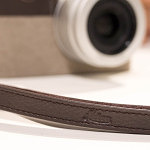
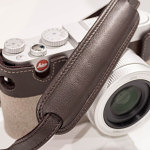
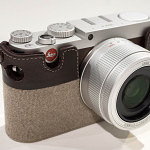
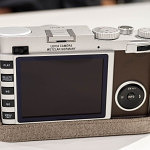

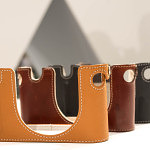
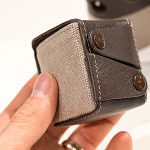
Thanks David, for the interesting info.
Question: will the CF D hot-shoe mounted flash work on other Leica cameras?
@Legardo Congrats on getting the new V-Lux. It's a great camera. The OIS button is to enable/disable the Optical Image Stabilization. I'm not familiar with an ALTADIF lens filter. My recommendation would be a B+W UV filter like this one. A fast memory card would suit you for taking 4K video and still images. Hope this helps.
Quite interesting information, thank you!